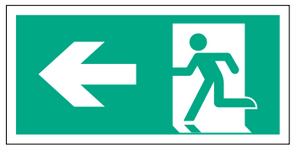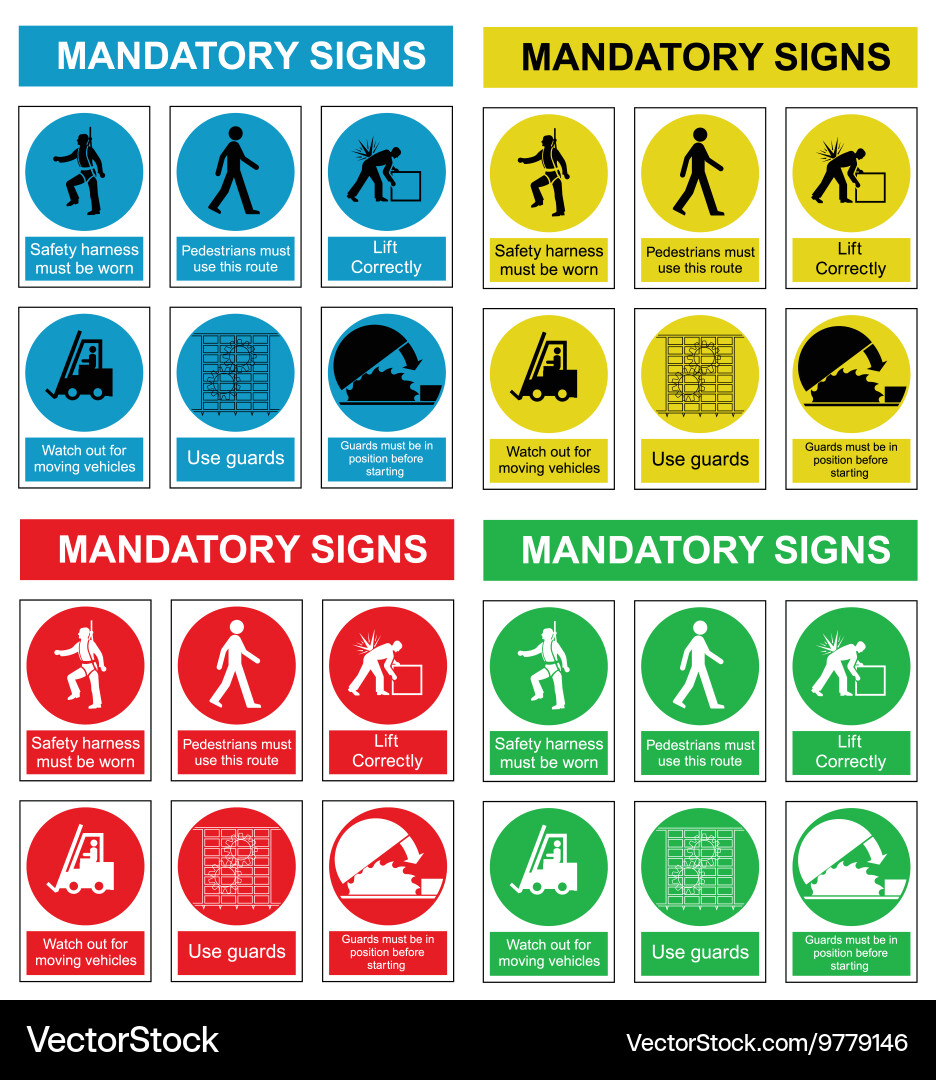The Value of Safety Signage: Enhancing Understanding and Minimizing Dangers
The Value of Safety Signage: Enhancing Understanding and Minimizing Dangers
Blog Article
Guide to Picking the Right Safety And Security Indications for Any Atmosphere
Picking the proper safety indicators for numerous environments is an important facet of risk monitoring and regulative conformity. It requires a complete understanding of the specific dangers existing, as well as an awareness of the lawful structures controling sign use.
Understanding Safety And Security Indication Types
Security indications play a critical duty in maintaining a secure setting, and comprehending the numerous types is crucial for reliable communication of dangers. These signs are classified largely right into four kinds: warning indications, required indicators, restriction signs, and informational indications.
Warning indications are triangular and generally yellow, alerting individuals to prospective dangers that may create injury or damages. Mandatory signs, typically circular and blue, suggest actions that need to be required to make certain safety, such as using personal protective devices. Prohibition indications, characterized by a red circle with a diagonal line, clearly indicate actions that are not permitted, such as cigarette smoking or entering a limited location. Informative indicators offer support or directions, commonly using eco-friendly for risk-free problems, blue for compulsory activities, and yellow for caution-related messages.
Comprehending these categories aids in choosing the appropriate indicators for specific atmospheres. By using the right security indicators, organizations can effectively communicate threats, promote compliance with safety and security protocols, and inevitably cultivate a culture of safety and security that protects staff members and visitors alike.
Analyzing Your Environment
Examining the certain qualities of your setting is fundamental to selecting the suitable safety and security signs. Various setups, such as commercial facilities, construction websites, or workplace settings, each present special dangers and operational contexts that must be taken into consideration.
Begin by recognizing possible dangers within your setting. In a manufacturing plant, hefty machinery and high noise degrees could necessitate signs showing personal protective tools (PPE) demands, while a medical care setting might need indicators notifying staff to biohazard areas.
Next, assess the physical design of the room. Consider the exposure of signs; they need to be put where they can be easily seen and understood by people relocating through the area. Review lighting problems, as badly lit areas might require reflective or illuminated signage to boost presence.
Additionally, think about the target market interacting with the indicators. Diverse workforces might demand multilingual signage or icons that share messages clearly without reliance on message. Evaluating these factors will certainly make sure that the safety indications selected properly connect required safety measures, ultimately fostering a more secure setting for all.
Regulatory Conformity Considerations
Comprehending governing conformity is critical when selecting safety and security signs, as it makes sure that your signs meets both lawful demands and sector criteria - Health and Safety Signs. Compliance with regulations not just shields your organization from potential penalties however likewise boosts work environment security and advertises a society of responsibility
First, familiarize yourself with the appropriate laws and laws that put on your specific industry. This may consist of government, state, and neighborhood mandates, in addition to specific guidelines from organizations such as OSHA (Occupational Safety And Security and Wellness Administration) or ANSI (American National Criteria Institute) These laws dictate the sorts of signs needed, their positioning, and the language made use of.
Next, take into consideration the details threats present in your atmosphere. Specific industries, such as construction or production, may have unique signage requirements that mirror the dangers entailed. Additionally, ensure that your indicators are compliant with ease of access requirements, making them conveniently legible for all employees.
Designing Effective Safety And Security Signs
Efficient safety indicators are not just a regulative requirement but likewise an essential component of an extensive safety and security method. To design efficient safety indicators, it is important to prioritize quality and exposure. Using globally identified signs and simple language can considerably enhance understanding. Indications ought to be created with high-contrast shades to ensure they are easily legible from a range, even in low-light problems.
In addition, the positioning of safety indicators is essential. Health and Safety Signs. Signs have to be positioned at eye level and in locations where they can be conveniently seen by people in the vicinity. It is also essential to take into consideration the certain audience; for instance, signs in industrial environments might require more technological language, while those in public spaces must stay accessible and basic
Integrating proper dimensions and materials is one more vital factor. Indicators need to be resilient and weather-resistant if positioned outdoors, while interior signs may require various considerations based on the environment. Ultimately, the objective of creating safety indicators is to communicate essential details successfully, making sure that people can swiftly comprehend potential hazards and respond appropriately, hence fostering a safer atmosphere for every person.

Upkeep and Updates
Frequently performing upkeep and updates for safety and security indicators is crucial to guarantee their proceeded efficiency and visibility. Over time, ecological factors such as wind, rainfall, and sunshine can weaken the products utilized in security indications, leading to fading, peeling, or complete disintegration. Normal assessments should be scheduled to assess the problem of all safety signage within any type of provided setting.
Updating safety and security signs is equally vital, especially when there are modifications in risks, regulations, or treatments. Organizations should stay abreast of regional legislations and industry standards Safety Signage to ensure compliance. Safety Signage. When modifications are made to the work area, such as brand-new machinery setups or changes in format, matching updates to security indications have to be carried out immediately
It is also suggested to keep a consistent supply of safety signs, guaranteeing that replacements are readily available. This proactive approach lessens downtime and boosts security by mitigating dangers linked with broken or obsolete signs. In conclusion, a reliable upkeep and update approach for security indicators not just preserves their practical stability yet likewise enhances a culture of safety within the workplace.
Verdict
In summary, the choice of ideal safety and security signs is vital for making certain a secure environment. A thorough understanding of the kinds of indicators, detailed evaluation of potential dangers, adherence to governing standards, effective design principles, and normal maintenance add to improved communication and safety and security. By carrying out these techniques, organizations can foster a culture of safety and security that protects people and advertises compliance with safety and security regulations, eventually bring about a much safer and extra safe work environment.
Assessing these variables will certainly make sure that the security signs selected effectively interact necessary preventative measures, inevitably cultivating a much safer setting for all.
Efficient safety indications are not just a regulatory requirement but also an important element of a detailed safety and security method. Eventually, the objective of making safety indications is to interact essential info effectively, making sure that people can swiftly understand potential threats and respond appropriately, thus promoting a much safer environment for everyone.
In final thought, an effective upkeep and update technique for safety and security signs not only maintains their functional stability but likewise reinforces a culture of security within the work environment.

Report this page